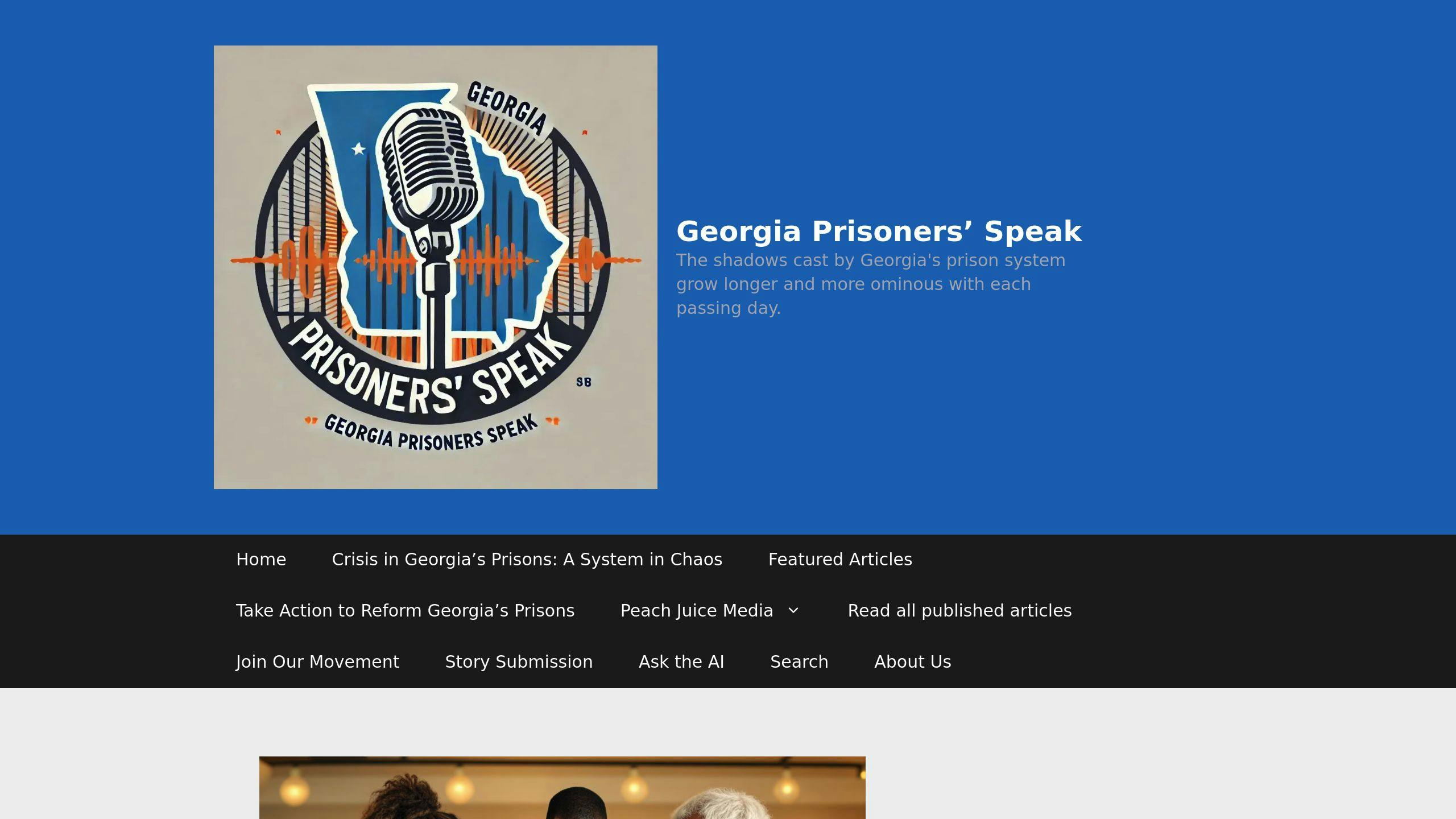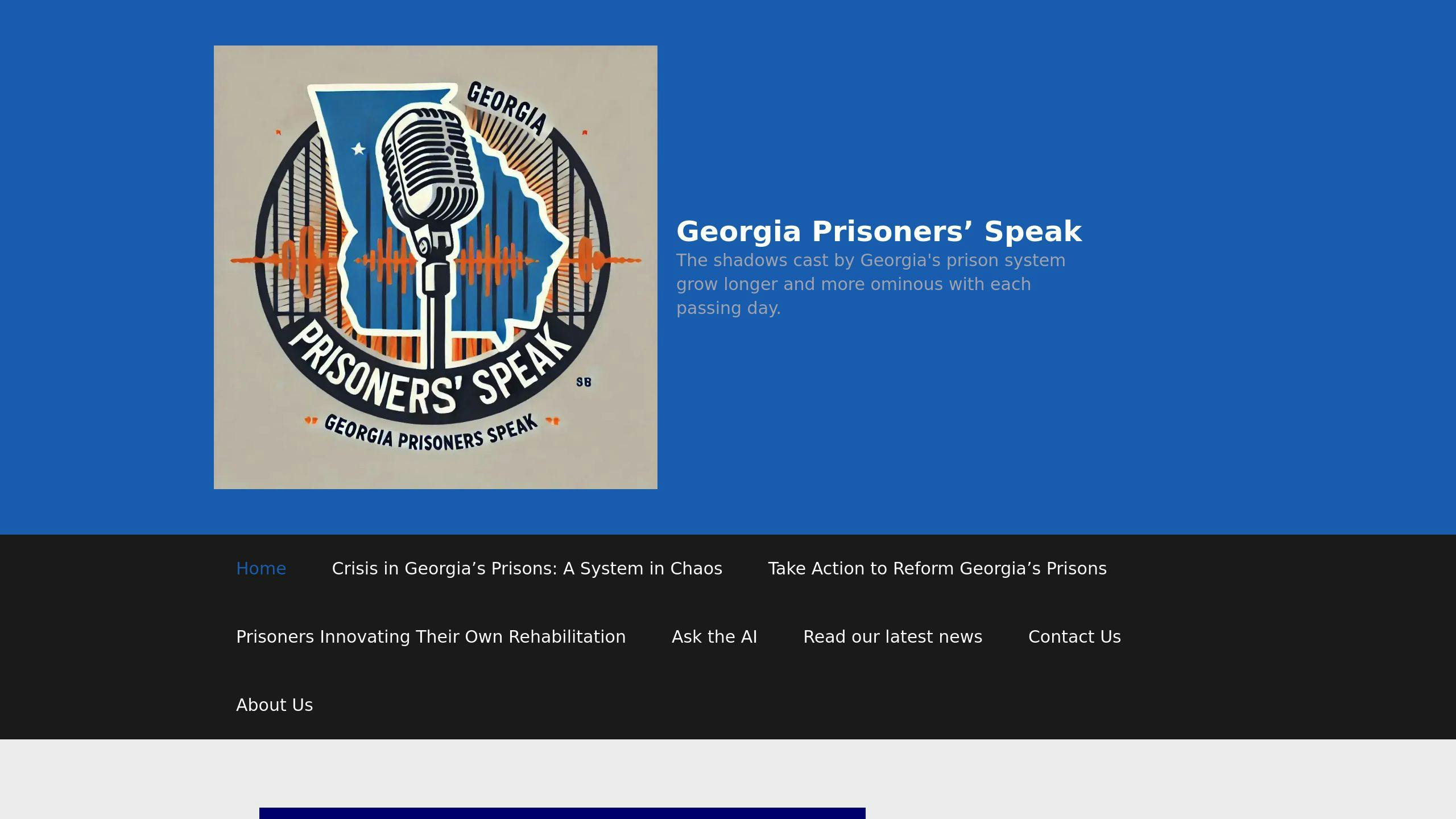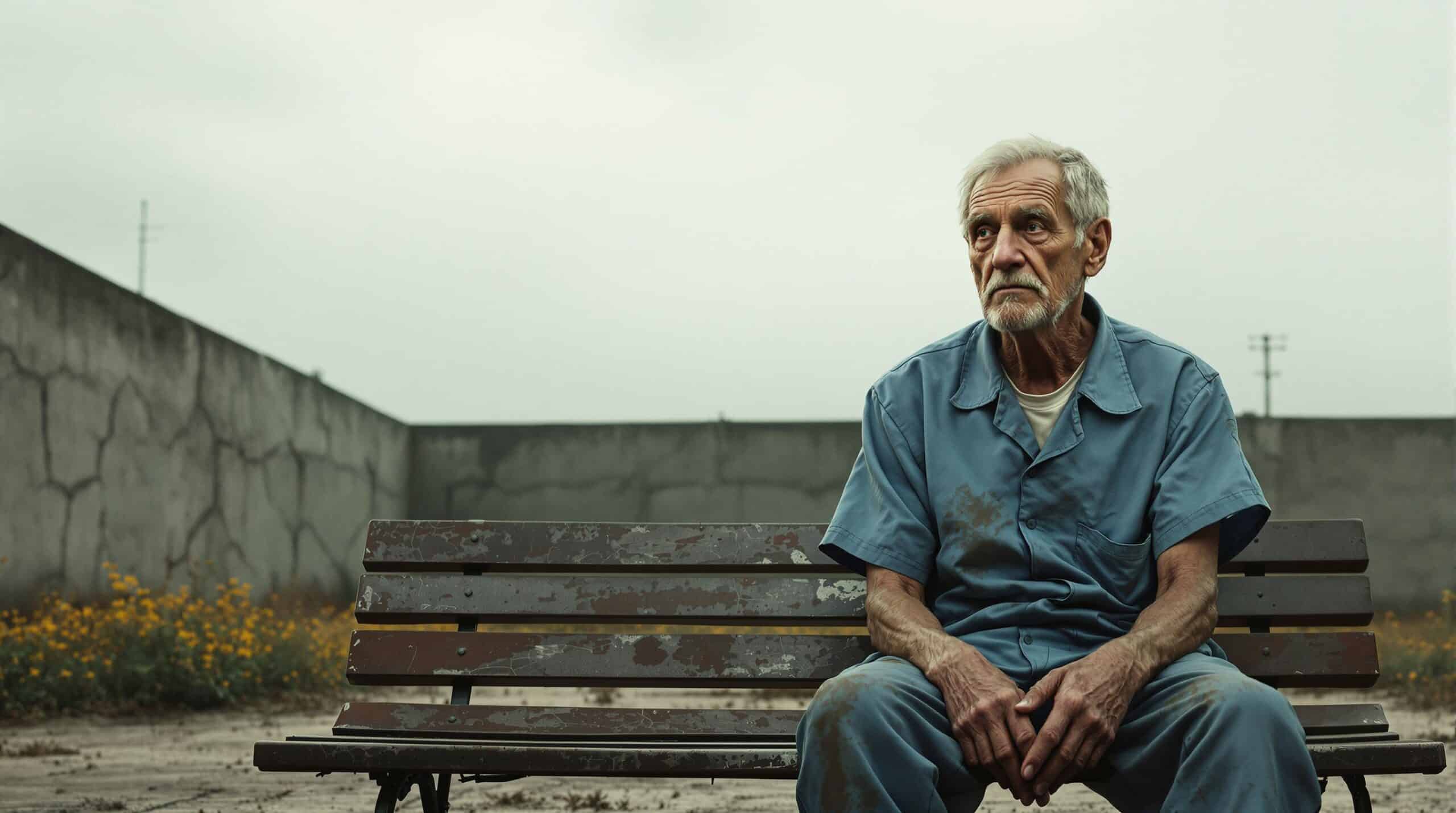Elderly inmates in Georgia’s prisons face severe challenges, from inadequate healthcare to unsuitable living conditions. With prisons not equipped for aging populations and vacancy rates exceeding 50%, the situation is dire. Here’s what you need to know:
- Rising Costs: Older inmates cost 3–9 times more than younger ones due to frequent medical needs.
- Poor Living Conditions: Lack of ramps, handrails, and accessible facilities makes daily life difficult.
- Low Risk of Reoffending: Elderly inmates are less likely to reoffend, raising questions about the necessity of prolonged incarceration.
- Solutions: Compassionate release programs and reintegration support (healthcare, housing, social services) can reduce costs and improve outcomes.
Georgia can address these issues by adopting policies that prioritize humane treatment and fiscal responsibility. Advocacy tools like ImpactJustice AI and Georgia Prisoners’ Speak empower citizens to push for meaningful reforms.
Aging Inmates: The Continual ‘Graying’ of America’s Prisons
Challenges Faced by Elderly Inmates
Georgia’s aging prison population faces a range of issues, from rising healthcare costs to unsuitable living conditions and the emotional strain of incarceration.
Healthcare Costs and Strain on Resources
Older inmates need frequent medical attention, including care for chronic conditions, emergency room visits, and access to specialized equipment like wheelchairs or walkers. These requirements drive up expenses significantly, with older inmates costing three to nine times more annually than younger ones.
Poor Living Conditions
Many of Georgia’s prisons were not designed to accommodate aging inmates. Basic features like ramps, handrails, and accessible bathrooms are missing, making daily life difficult for older prisoners. On top of that, staffing shortages across the state – where vacancy rates exceed 50% and climb above 70% in some of the largest facilities [2] – mean elderly inmates often lack proper care and oversight.
"Prison officials are hard-pressed to provide conditions of confinement that meet the needs and respect the rights of their elderly prisoners. They are also ill-prepared – lacking the resources, plans, commitment, and support from elected officials – to handle the even greater numbers of older prisoners projected for the future." – Human Rights Watch [4]
Low Likelihood of Reoffending
Data shows that older inmates pose a much lower risk to public safety compared to younger offenders. By 2021, U.S. state and federal prisons housed 178,200 inmates aged 55 and older – a 7% increase from the previous year [1]. Despite this, the cost of keeping elderly inmates behind bars remains high. Releasing these individuals under compassionate release programs could reduce expenses while aligning with humanitarian principles.
Practical solutions, such as reintegration programs and policies for early release, could help address these challenges while balancing fiscal concerns and public safety.
Solutions: Release and Reintegration
Compassionate Release for Elderly Inmates
Compassionate release programs for elderly inmates can help cut costs and provide more respectful treatment for aging prisoners. Caring for elderly inmates is significantly more expensive, often costing three to nine times as much as for younger inmates. By expanding these programs, Georgia could allocate funds more effectively while addressing the specific needs of aging prisoners.
However, simply releasing elderly inmates isn’t enough. To ensure they can successfully adapt to life outside prison, reintegration programs must be a key part of the process. These programs are essential for addressing the unique challenges older individuals face after incarceration.
Support for Reintegration After Release
Reintegration programs should focus on the specific needs of elderly individuals, such as healthcare access and stable housing. Ensuring continuity in medical care, providing accessible living arrangements, and offering social services like case management can make a significant difference. These steps help prevent health crises, reduce homelessness, and lower the chances of reoffending.
| Support Area | Services Needed | Impact |
|---|---|---|
| Healthcare | Ongoing medical care, prescription management, specialist visits | Helps maintain health and reduces reliance on emergency services |
| Housing | Accessible homes, assisted living options, family support | Provides stability and lowers the risk of homelessness |
| Social Services | Case management, help with benefits, community programs | Encourages smoother reintegration and decreases recidivism |
The Federal Bureau of Prisons has shown that reintegration programs can work. Their efforts to connect elderly inmates with critical services have been effective [5]. Georgia could adopt similar strategies, especially in urban areas where resources are more accessible.
sbb-itb-7858f51
Using Technology to Advocate for Change
Technology is changing the way we push for prison reform, especially for elderly inmates in Georgia’s correctional system. Digital platforms are giving citizens the tools they need to take action and influence policy.
How ImpactJustice AI Helps

ImpactJustice AI turns concerns about elderly inmate issues – like poor healthcare, inaccessible facilities, and rising costs – into well-researched, evidence-backed messages for policymakers. The platform uses current data and research to create effective advocacy emails, which are sent directly to decision-makers through an easy-to-use system.
This tool is especially helpful for tackling challenges like advocating for expanded compassionate release programs and improving prison conditions. By providing data to back reform efforts, ImpactJustice AI equips advocates to present stronger arguments for change.
Role of Georgia Prisoners’ Speak

Georgia Prisoners’ Speak (GPS) sheds light on the realities inside Georgia’s prisons, focusing on the struggles of elderly inmates. It highlights issues such as inadequate medical care, mobility challenges, and lack of accessible facilities. GPS not only amplifies the voices of inmates and their families but also offers resources to help citizens reach out to government officials effectively.
Conclusion: Addressing the Needs of Elderly Inmates
Policy Changes and Public Support
Georgia’s prison system faces a growing challenge with its aging inmate population. Since 1990, the state’s prison population has doubled to nearly 50,000 [2], straining resources and creating tough conditions for elderly inmates. These individuals often require specialized care, including medical attention and mobility support, which current staffing shortages struggle to provide. Tackling this issue calls for targeted policy reforms that balance cost reduction, improved living conditions, and respect for human dignity. Public involvement is also key, with modern advocacy tools playing a crucial role in pushing for these changes.
Advocacy Tools for Action
Policy changes often need consistent public pressure to gain traction. Tools like ImpactJustice AI make this easier by turning concerns into data-backed messages for policymakers. This empowers citizens to advocate for expanded compassionate release programs and better support for elderly inmates.
Georgia Prisoners’ Speak (GPS) provides another avenue for action, amplifying the voices of inmates and their families. Through GPS, citizens can:
- Access resources to connect with government representatives
- Share personal stories and document prison conditions
- Participate in community advocacy initiatives
- Back campaigns focused on constitutional rights and accountability
Federal guidelines already permit compassionate release for inmates aged 65 or older who have served ten years or 75% of their sentence [5][3]. Georgia can use these as a foundation to create its own solutions tailored to the needs of elderly inmates. With the help of advocacy tools like ImpactJustice AI and GPS, citizens have the power to push for reforms that prioritize both public safety and humane treatment.
FAQs
How can corrections respond to the problems of elderly offenders?
Addressing the challenges of elderly inmates requires practical steps tailored to their unique needs. One key solution is creating specialized housing that includes features designed for their well-being:
| Feature | Purpose | Impact |
|---|---|---|
| Mobility-friendly design | Supports movement needs | Reduces injuries and strain |
| Medical equipment storage | Ensures quick access to tools | Improves response times |
| Enhanced lighting | Increases visibility | Helps prevent accidents |
| Support infrastructure | Encourages independence | Enables better self-care |
Healthcare costs are another pressing issue. In 2013, 19% of the Federal Bureau of Prisons’ budget went toward healthcare. This underscores the need for better resource allocation.
"Limited care and resources for elderly inmates can reduce life expectancy by two years." – Prison Policy Initiative [1]
To address these issues, corrections facilities should focus on the following:
- Specialized Staff Training: Equip staff with skills in geriatric care to meet the specific needs of older inmates.
- Medical Partnerships: Collaborate with local healthcare providers to ensure timely and adequate medical attention.
- Preventive Care Programs: Offer regular health screenings to catch and address health issues early.
- Mental Health Support: Provide counseling services tailored to age-related mental health challenges.
These steps not only improve the quality of life for elderly inmates but also help manage costs more effectively. Combining these efforts with public advocacy can lead to meaningful improvements in correctional systems like Georgia’s.
